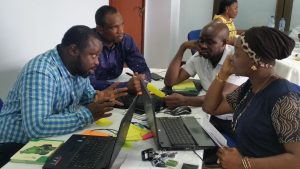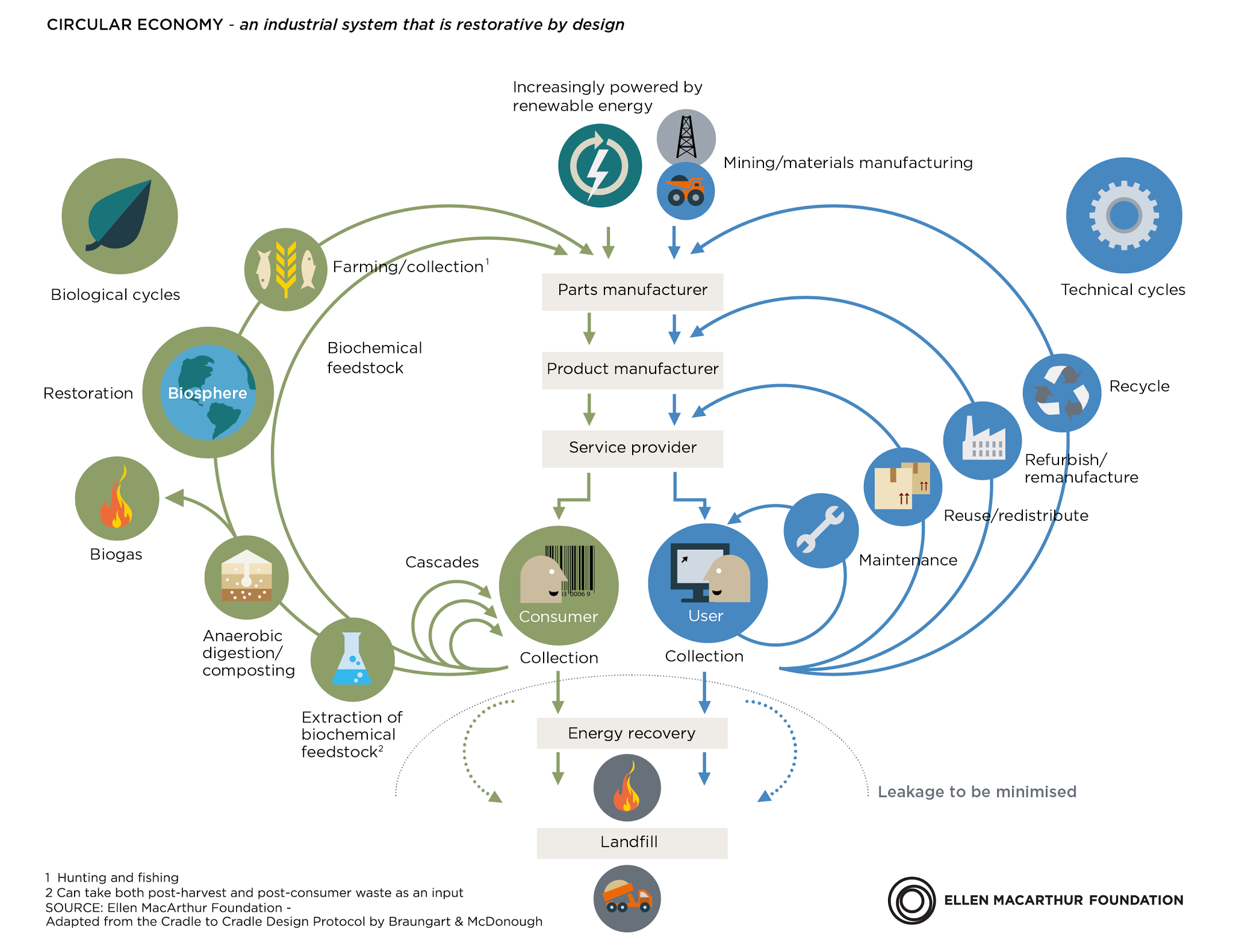 Are you looking to increase your recovery of investment of resources and materials but unsure of how to take that next step. Elevate you and your parters to a regional circular economy with a focused one-day workshop that includes mapping exercises on a take-make-waste linear economy, adapting to a circular economy model and identifying additional stakeholders, gatekeepers, policies and strategies. At the end of the workshop, you will receive a report that includes maps, a synthesis of the workshop and an Ethical Circular Economy Professional certificate. For more information or to schedule a workshop with your partners, contact us today.
Are you looking to increase your recovery of investment of resources and materials but unsure of how to take that next step. Elevate you and your parters to a regional circular economy with a focused one-day workshop that includes mapping exercises on a take-make-waste linear economy, adapting to a circular economy model and identifying additional stakeholders, gatekeepers, policies and strategies. At the end of the workshop, you will receive a report that includes maps, a synthesis of the workshop and an Ethical Circular Economy Professional certificate. For more information or to schedule a workshop with your partners, contact us today.
Online Learning Packet
Thank you for taking the time to orient yourself to the basic principles of the circular economy prior to the face to face workshop. Over the next several weeks, you may move at your own pace through the reading materials and videos on the ethical circular economy. Consumption of the entire online learning packet requires approximately 4 hours of your time.
Introduction to Circular Economy
The term circular economy describes innovative strategies that work in tandem to design out and eliminate waste throughout product life cycles by making use of existing biological matter, reusable or recycled materials and shared resources. In contrast to a linear “take-make-waste” economy, a circular economy results in financial savings and efficiency within organizations that in turn benefits the communities that they serve.

Shifting to a circular economy requires creativity in rethinking designs, processes and delivery methods. Watch the video to the left to learn more about the vision for a future circular economy. (Video length 3:48)
Once you have watched the video you will have a general understanding of the concept of circular economy, take some time to read through the Ellen MacArthur Foundation’s Executive Summary, which provides an in-depth perspective on how the circular economy can be implemented across organizational sectors, along with a compelling rationale for the recommended approaches.
Systems Thinking and Leverage Points
When envisioning and designing for a circular economy, the ability to think in systems is essential. Systems thinking is a complex science, requiring one to recognize opportunities within a system to intervene and make an impact. These interventions are known as leverage points. The following articles by systems scientist Donella Meadows will help you familiarize yourself with systems thinking and leverage points in a deeper way, so that you can apply these concepts to your own vision of a circular economy.
Articles by Donella Meadows
The Ethical Circular Economy
This video provides a comprehensive overview of sustainability and systems thinking, circular economy, net positive impact and the United Nations’ Sustainable Development Goals. (Video length 10:26)
Early in 2016, Arizona State University was established as a Pioneer University in partnership with the Ellen MacArthur Foundation. ASU is committed to circular economy education, use-inspired research, and solutions development throughout the university and also expanding its reach through executive and professional education. Researchers at ASU emphasize education and research towards an ethical circular economy, which encompasses six principles:
- Design out waste
- Build resilience through diversity
- Work towards using energy from renewable sources
- Think in systems
- Think in cascades
- Improve social value
Read more about ASU’s commitment to the ethical circular economy and the six driving principles in the white paper draft: A Transdisciplinary Approach to an Ethical Circular Economy
Explore the Sustainable Development Goals.
Ellen MacArthur Foundation Building Blocks of a Circular Economy
Explore the Circular Design Guide which, made in collaboration with IDEO, which offers circular innovation methods as well as interviews with designers, creative exercises and worksheets, case-studies and links to technical tools. Please review the methods and tools section, specifically.
Circular Economy Case Studies
Sinctronics: creating a reverse
logistics ecosystem
Manufacturing supply chains are often linear systems that create a lot of waste. Sinctronics closed loops in its manufacturing processes by recycling materials and waste into new products. Read the following case study, paying particular attention to the data on recovered material, waste reduction and the impact on Sinctronics consumers.
Sinctronics Case StudyBalbo Group: regenerative
agriculture at scale
Agriculture provides ample opportunity for achieving circularity through biological regeneration. Read the following case study on the Balbo Group, Brazil’s largest organic sugarcane grower and learn about their innovative closed-loop harvesting system.
Balbo Group Case StudyGoogle Data Centers
Another Ellen MacArthur Foundation circular economy partner, Google, Inc., is committed to sustainability and circularity in its operations. Google recently published a case study on how it is operationalizing the circular economy in its worldwide data centers. Read the case study below, paying special attention to Google’s circularity within its supply chain, as well as how it uses quarterly life cycle assessments to find ongoing opportunities to reduce, reuse and recycle.
Google Case Study
